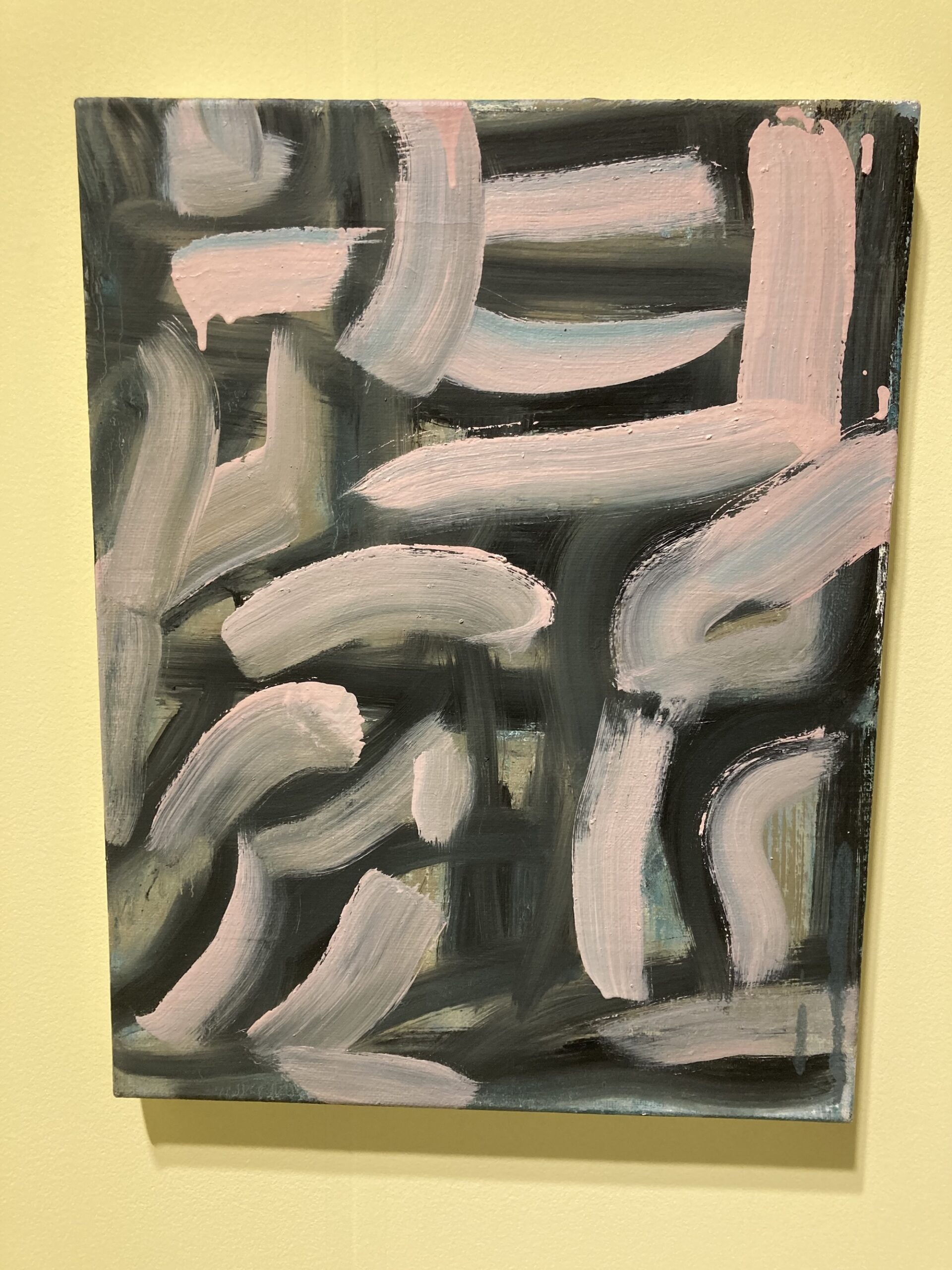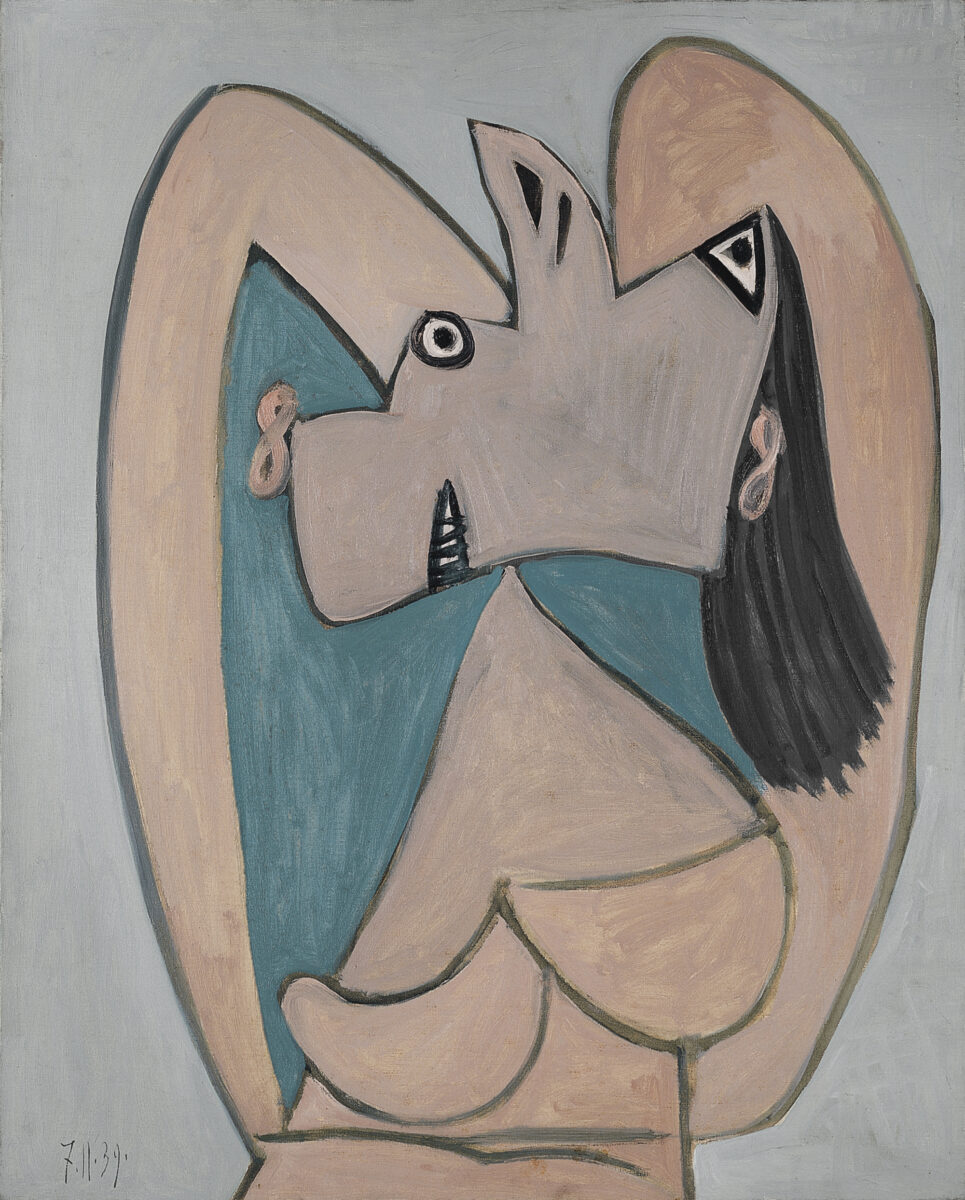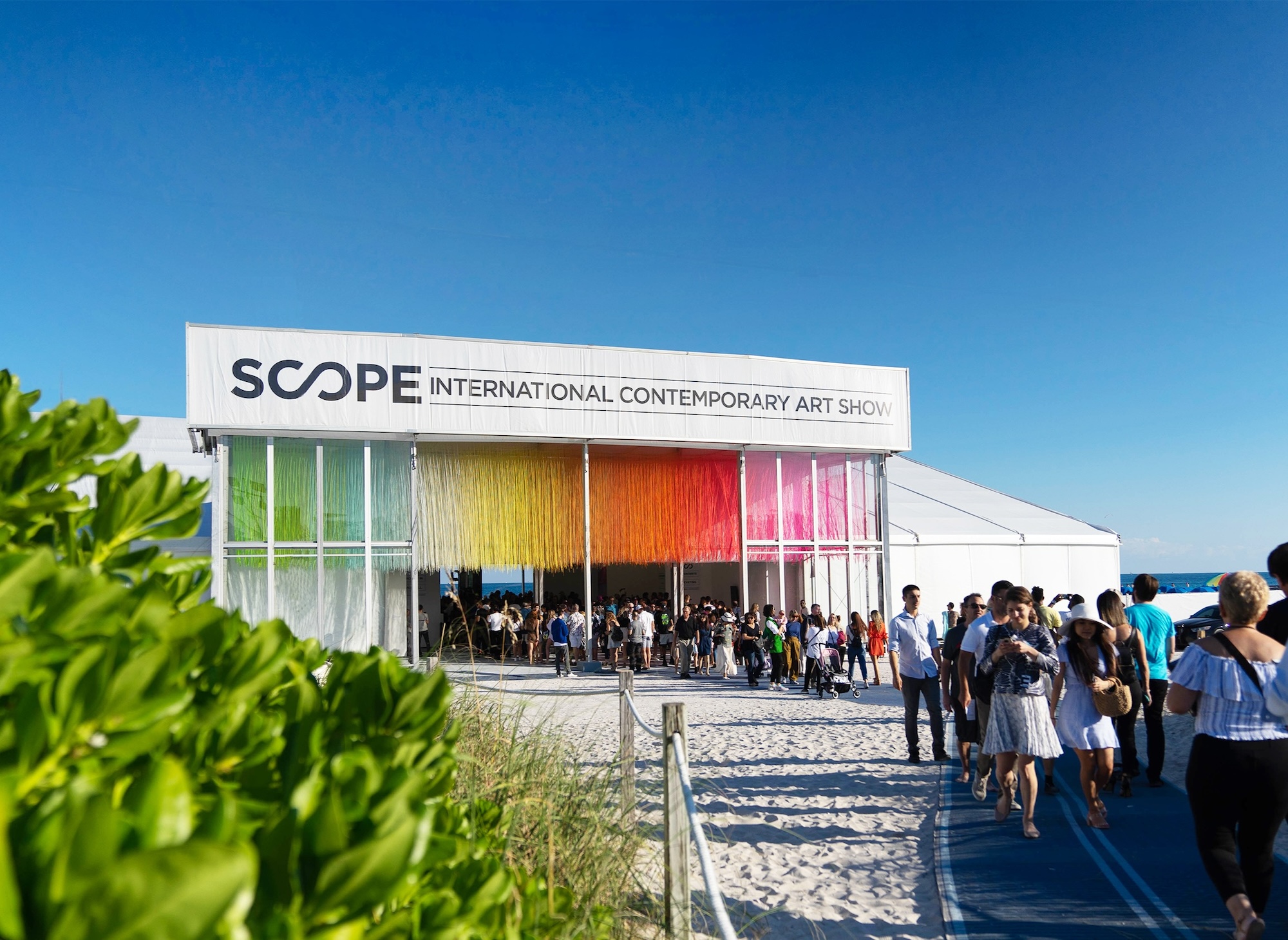
by jsendak | Dec 8, 2024 | Art

Art has long been a powerful medium for human expression, allowing us to convey emotions, ideas, and perspectives in ways that words often fall short. Throughout history, artists have captivated audiences and left lasting impressions through their masterful creations. From iconic paintings and sculptures to cutting-edge installations and digital art, the world of art is vast and diverse, offering a multitude of experiences to behold.
In this article, we will explore ten artworks that have had a profound impact on viewers, transcending time and leaving an indelible mark on the art world. These exceptional works showcase the transformative power of art, as they not only reflect the societal and cultural contexts in which they were created but also resonate with contemporary audiences, evoking thought and emotions.
1. The Starry Night by Vincent van Gogh (1889)
One cannot discuss influential artworks without mentioning Vincent van Gogh’s The Starry Night. This iconic painting, created during the artist’s stay at an asylum in Saint-Rémy, France, is a vivid representation of his inner turmoil and emotional intensity. The swirling brushstrokes and vibrant colors transport viewers into a dreamlike landscape, inviting contemplation of nature’s grandeur and the human experience.
2. The Persistence of Memory by Salvador Dalí (1931)
Salvador Dalí’s The Persistence of Memory is renowned for its surreal imagery and thought-provoking symbolism. The melting clocks and barren landscape challenge conventional notions of time and reality, encouraging viewers to question their perception of the world. Dalí’s masterpiece continues to captivate audiences and inspire countless contemporary artists.
3. Guernica by Pablo Picasso (1937)

Pablo Picasso’s Guernica serves as a timeless testament to the horrors of war and the indomitable power of art as a means of protest. Created in response to the bombing of Guernica during the Spanish Civil War, Picasso’s monumental painting captures the anguish and pain of those affected, becoming an enduring symbol of peace and anti-war sentiment.
4. The Birth of Venus by Sandro Botticelli (circa 1485)
Sandro Botticelli’s The Birth of Venus is an exquisite Renaissance masterpiece that celebrates beauty, love, and rebirth. The ethereal goddess emerging from the sea embodies grace and serenity, echoing classical mythology and inspiring countless artists throughout history. Botticelli’s timeless work continues to enchant viewers with its enchanting portrayal of divine femininity.
5. Water Lilies by Claude Monet (1896-1926)
Claude Monet’s Water Lilies series is a testament to the artist’s fascination with nature and his desire to capture the fleeting essence of light and color. Through his innovative use of impressionistic brushstrokes and bold palette, Monet created a visual symphony that immerses viewers in tranquil landscapes, inviting contemplation and introspection.
6. The Scream by Edvard Munch (1893)
Edvard Munch’s iconic painting, The Scream, encapsulates the existential angst and inner turmoil that is inherent to the human condition. The figure’s haunting expression and the swirling backdrop evoke a sense of anxiety and despair, resonating with individuals across generations. Munch’s masterpiece continues to be a poignant reminder of the complex emotions we all experience.
7. The Last Supper by Leonardo da Vinci (1495-1498)

Leonardo da Vinci’s The Last Supper is an awe-inspiring fresco that depicts the final gathering of Jesus and his disciples. Da Vinci’s meticulous attention to detail and his innovative use of perspective create a powerful narrative that transcends time. This monumental artwork prompts contemplation of faith, sacrifice, and the human capacity for betrayal.
8. Les Demoiselles d’Avignon by Pablo Picasso (1907)
Picasso’s groundbreaking work, Les Demoiselles d’Avignon, heralded the advent of Cubism and forever changed the course of modern art. This radical painting shattered traditional notions of beauty and representation, presenting a raw and fragmented portrayal of five female figures. Picasso’s daring exploration of form and perspective paved the way for new artistic possibilities.
9. Andy Warhol by Marilyn Diptych (1962)
Andy Warhol’s Marilyn Diptych is a vibrant and enigmatic portrayal of the iconic actress Marilyn Monroe. This innovative artwork, created using the technique of screen printing, explores themes of celebrity culture, consumerism, and mortality. Warhol’s bold use of color and repetition challenges traditional notions of art while revealing the complex layers of fame and its transient nature.
10. Untitled (Cowboy) by Richard Prince (1989)
Richard Prince’s photograph Untitled (Cowboy) challenges established notions of authorship and originality in art. By appropriating an image from a Marlboro cigarette advertisement, Prince raises questions about the commodification of art and the role of the artist as a creator or curator. This thought-provoking artwork invites reflection on the nature of artistic expression and the influence of popular culture.
These ten artworks, each remarkable in their own right, demonstrate the enduring power of art to provoke thought, evoke emotions, and transcend time. From the contemplation of the sublime to the deconstruction of societal norms, these masterpieces invite us to engage with the world around us and find our own lasting impressions within the realm of art.

10 artworks that left a lasting impression.
Read the original article

by jsendak | Dec 5, 2024 | Art

Thematic Preface: Picasso’s Radical Evolution in Royan
At the heart of artistic creativity lies a constant desire for exploration and evolution. Artists throughout history have revolutionized their practices, capturing the spirit of their times and challenging conventional norms. One such artist who exemplified this spirit was none other than Pablo Picasso.
Throughout his illustrious career, Picasso constantly pushed the boundaries of art, redefining styles and techniques that had previously dominated the art world. However, it was during his time at the French coastal town of Royan that Picasso’s artistic practice took a radical and transformative turn.

Located on the banks of the Gironde estuary, Royan became Picasso’s refuge in the early 1950s. It was a period marked by upheaval and rapid social change, as the world emerged from the devastation of World War II. Picasso, ever attuned to the pulse of society, found solace and inspiration in this picturesque coastal town.
The Museo Picasso Málaga, in its newest exhibition, delves deep into this pivotal period of Picasso’s life. By showcasing his works from the Royan period, the exhibition seeks to shed light on the artist’s embrace of experimentation and his departure from earlier artistic conventions.
In Royan, Picasso found himself captivated by the serene beauty of the landscape and the interplay of light and shadow. Through a series of artistic experiments, he challenged his own established style and embraced a more abstract and fragmented approach. This shift can be observed in his use of vibrant colors, distorted forms, and fragmented compositions.

The exhibition at the Museo Picasso Málaga not only showcases Picasso’s works, but it also provides a deeper understanding of the historical context that influenced his artistic exploration. It takes the visitor on a journey through the post-war period, highlighting the collective desire for change and the longing for new forms of expression.
As we contemplate Picasso’s radical evolution in Royan, it is impossible to ignore the parallels with our own contemporary world. Just as Picasso sought to break free from established norms, artists today continually challenge the status quo, pushing the boundaries of what is deemed acceptable in art.
This exhibition serves as a reminder that artistic evolution is a perpetual process, one that requires the courage to pursue new avenues of expression. Picasso’s journey in Royan embodies this spirit of transformation and serves as an inspiration for artists, art enthusiasts, and spectators alike.
“Every act of creation is first an act of destruction.” – Pablo Picasso
Join us at the Museo Picasso Málaga as we navigate through Picasso’s radical transformation in Royan, and discover the enduring power of artistic reinvention.

A new exhibition at the Museo Picasso Málaga explores the radical development of Picasso’s artistic practice during his time at French coastal town of Royan
Read the original article

by jsendak | Dec 1, 2024 | Art

Thematic Preface: Reimagining Contemporary Art
SCOPE Art Show—the premier showcase for contemporary art opens next week and has revealed highlights of its 23rd edition. As we prepare to immerse ourselves in the vibrant world of contemporary art, it is essential to understand the central topic that this article aims to explore. In this edition, we delve into the notion of reimagining contemporary art, examining how artists throughout history and in the present day push boundaries, challenge conventions, and offer fresh perspectives that captivate and provoke.
Historical Context: A Legacy of Innovation
Artistic revolutions have defined different epochs, transforming not only the way we perceive art but also our understanding of the world. From the Renaissance masters breaking free from Medieval constraints to the Impressionists’ bold departure from the academic establishment, the history of art is a testament to the power of reimagining the status quo. These avant-garde movements revolutionized artistic expression, inspiring generations of creatives to think differently and challenge prevailing norms.

Fast forwarding to the 20th century, the Modernist era witnessed a surge of artistic experimentation like never before. Artists such as Pablo Picasso, Wassily Kandinsky, and Marcel Duchamp pushed boundaries in painting, sculpture, and conceptual art, respectively. Their visionary works dismantled traditional forms, redefining the very essence of art itself. The power to reimagine art’s purpose, methods, and boundaries remains intrinsic to the contemporary art scene.
The Contemporary Landscape: An Evolving Canvas
In today’s globalized and interconnected world, the contemporary art scene continues to evolve, fueled by technological advancements, cultural shifts, and socio-political changes. Contemporary artists explore diverse mediums, from traditional paintings and sculptures to immersive installations, performance art, and digital creations. They challenge norms, provoke dialogue, and confront pressing issues such as identity, climate change, and social justice.
The contemporary art world is a dynamic tapestry woven with threads of diversity, inclusivity, and innovation. Emerging artists, often from marginalized communities, are reimagining representation and visibility, offering fresh narratives that challenge dominant narratives. Additionally, the advent of social media platforms empowers artists to connect directly with audiences, democratizing access to art and fostering newfound collaborations.
SCOPE Art Show: The Intersection of Tradition and Innovation

SCOPE Art Show stands at the forefront of this reimagining of contemporary art. With each edition, the show presents a curated selection of artists who push boundaries, redefine genres, and inspire with their creativity. By exploring innovative techniques, challenging established norms, and addressing urgent issues, SCOPE Art Show facilitates a dynamic dialogue between artists, collectors, and art enthusiasts.
The 23rd edition of SCOPE Art Show promises to captivate visitors with its diverse lineup of international talents. From stunning visual artwork to thought-provoking installations and digital experiments, the show encompasses a multitude of artistic practices that expand our understanding of contemporary art.
In this article, we invite you to delve into the world of SCOPE Art Show and discover the artists who are reshaping artistic boundaries and forging new pathways for future generations. Together, let us embark on a journey that celebrates the power of reimagining contemporary art and the boundless creativity that fuels our collective imagination.

SCOPE Art Show—the premier showcase for contemporary art opens next week and has revealed highlights of its 23rd edition.
Read the original article

by jsendak | Nov 30, 2024 | Art

Thematic Preface: The Power of Art and Activism in Shaping Societies
In an ever-evolving world that grapples with social, political, and environmental challenges, the role of art and activism has emerged as a powerful force for catalyzing change. Art has long been a reflection of society, capturing its essence and inspiring generations to question the status quo. From the provocative works of Picasso during the tumultuous 20th century to the graffiti murals adorning the streets of modern cities, artistic expression has consistently pushed boundaries and challenged established norms.
This article delves into the fusion of art and activism and explores how they intertwine to shape societies. We will delve into historical examples that have stood the test of time, such as the political cartoons of Thomas Nast that helped expose corruption, and the iconic civil rights photography of the 1960s by figures like Gordon Parks. These pivotal moments demonstrate how art can break through cultural barriers, sparking conversations that lead to tangible societal shifts.
Furthermore, we will examine contemporary art movements and the digital age, where the boundaries between artist and audience are blurred. Social media platforms like Instagram and TikTok have become channels for activists, artists, and grassroots movements to share their perspectives, mobilize communities, and challenge prevailing narratives. As we explore these platforms, we will discuss the democratization of art through technology and the immense power it holds to galvanize global audiences.
Moreover, this article will delve into the importance of art and activism in addressing pressing issues such as climate change, racial inequality, and gender discrimination. By focusing on artists who use their craft as a tool for advocacy, we will examine how creative mediums can amplify marginalized voices and drive meaningful change. From the eco-art installations of Olafur Eliasson to the resonating words of Greta Thunberg, we will highlight how art and activism converge to create spaces for dialogue, empathy, and action.
Ultimately, this exploration of art and activism aims to inspire readers to recognize the immense power they hold as both creators and consumers of art. By appreciating the transformative potential of artistic expression, we can become informed participants in the conversations that shape our societies. So, join us as we delve into the world of art and activism and celebrate the artists who dare to challenge the status quo, sparking the changes we need for a more just and inclusive world.

Elsie & Marshall: Feedback #7 // November 30–December 21, 2024
Read the original article

by jsendak | Nov 26, 2024 | Art

The Potential Future Trends in the Art Industry: Analysis of Lillie P. Bliss and the Birth of the Modern
Lillie Plummer Bliss, one of the founders of The Museum of Modern Art (MoMA), played a significant role in shaping the trajectory of modern art in the United States. Her visionary act of leaving a large part of her art collection to the museum laid the foundation for its future development. The exhibition, Lillie P. Bliss and the Birth of the Modern, brings together 40 works from Bliss’s collection, showcasing her support for groundbreaking artists such as Paul Cézanne, Odilon Redon, Georges-Pierre Seurat, and Pablo Picasso.
The Importance of Lillie P. Bliss’s Contribution
Bliss’s unwavering support for modern art during a time when it was often met with suspicion or ridicule was crucial. By declaring that these artists had something worth saying and deserved the freedom to express themselves, Bliss championed the artistic innovation happening in her time. Her generous gift allowed MoMA to not only preserve and exhibit her collection but also to fund new acquisitions. Notably, the sale of some of Bliss’s works enabled the acquisition of Vincent van Gogh’s iconic painting, The Starry Night.
Despite her significant contribution to the history of modern art in the United States, Bliss remains under-recognized. This lack of recognition is partly due to her desire to stay out of the spotlight, as evidenced by her request to burn her personal papers at the end of her life.
The Future Trends in the Art Industry
The exhibition, Lillie P. Bliss and the Birth of the Modern, not only sheds light on Bliss’s remarkable contributions but also prompts us to reflect on potential future trends in the art industry. These trends can be summarized as follows:
-
Increased Recognition for Female Contributors: Bliss’s story exemplifies the under-recognition of female figures in the art world. As we move forward, there is an opportunity for the industry to rectify this historical bias and give due recognition to the countless women who have made significant contributions to art.
-
An Emphasis on Art Collections: Bliss’s gift of her art collection to MoMA highlights the importance of private collections in shaping the future of museums and artistic heritage. With rising art prices and limited public funding, art collectors may play an increasingly pivotal role in preserving and expanding cultural institutions.
-
The Intersection of Art and Philanthropy: Bliss’s philanthropic act paved the way for MoMA’s growth. In the future, we can expect to see more philanthropic individuals using art as a means to support cultural institutions and foster artistic expression. This intersection between art and philanthropy has the potential to create sustainable models for artistic development.
-
Digitization and Accessibility: As technology continues to advance, the art industry will likely witness a significant shift towards digitization and increased accessibility. Virtual exhibitions, online collections, and interactive experiences will make art more accessible to a global audience, transcending geographic barriers.
-
Art as a Medium for Social Change: Bliss’s support for groundbreaking artists demonstrates the transformative power of art in challenging societal norms. In the future, we can expect artists to continue using their work to drive conversations around social and political issues, contributing to a more inclusive and equitable society.
Recommendations for the Art Industry
Based on the identified trends, the following recommendations can be made for the art industry:
-
Enhance Representation: The industry should actively work towards recognizing and promoting diverse voices, including women and underrepresented communities. This can be achieved by showcasing a wider range of artists in exhibitions, curatorial positions, and gallery representation.
-
Cultivate Art Patronage: Cultivating relationships with art collectors and patrons is crucial for sustaining the growth of cultural institutions. Museums and galleries can explore innovative ways to engage with collectors, such as offering exclusive access, personalized experiences, and collaborative opportunities.
-
Invest in Digital Infrastructure: It is essential for art organizations to invest in digital infrastructure that enables online exhibitions, virtual collections, and interactive platforms. This will expand the reach of art and engage a broader audience, including those who may not have access to physical art spaces.
-
Promote Artists as Agents of Change: Supporting artists who use their work to address social and political issues is crucial. By providing platforms and resources, the art industry can amplify these voices and facilitate meaningful conversations that contribute to social change.
The future trends in art, as exemplified by Lillie P. Bliss and the Birth of the Modern, offer new opportunities and challenges for the industry. By recognizing and leveraging these trends, the art world can continue to evolve and thrive, ensuring the preservation and growth of artistic expression for generations to come.
References:
– Museum of Modern Art. (n.d.). Lillie P. Bliss and the Birth of the Modern. MoMA. Retrieved from: [https://www.moma.org/calendar/exhibitions/5115](https://www.moma.org/calendar/exhibitions/5115)
– Miller, M. (2016). MoMA’s founding women hailed on its latest opening night. New York Post. Retrieved from: [https://nypost.com/2016/10/20/momas-founding-women-hailed-on-its-latest-opening-night/](https://nypost.com/2016/10/20/momas-founding-women-hailed-on-its-latest-opening-night/)



















